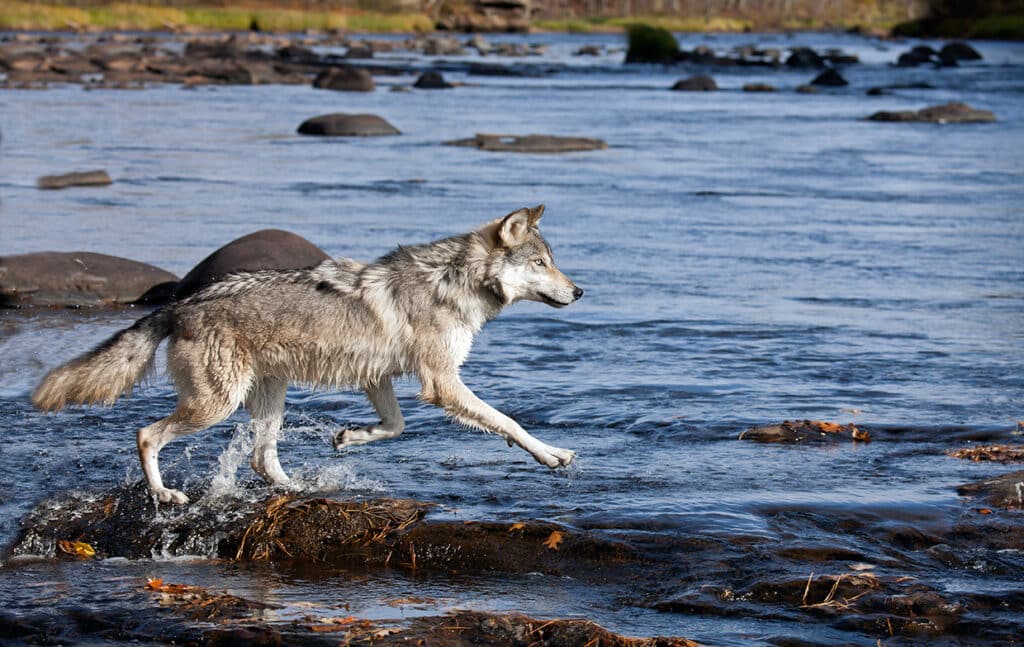
Minnesota DNR requests feedback on first changes to wolf management in 22 years
A comment period is now open on a proposed revision of Minnesota’s wolf management plan. The Minnesota Department of Natural Resources says its goal is to support a stable wolf population, while accommodating the “diverse” views of the state’s residents. The plan is being updated for the first time since 2001, and much has changed in the intervening years.
Wolves are currently protected by the Endangered Species Act from any killing except to protect human life. Their status has bounced back and forth over the past decade as state and federal policy and lawsuits have vacillated between allowing high hunting harvest of wolves in some states, to the type of strict protection they currently receive. Updating the state’s wolf plan began in 2019, when wolves were designated as Endangered, they were briefly removed by the Trump administration, and with the draft now ready, are again protected.
Conservation is a high priority
“Wolf conservation is a high priority for the DNR and we expect this updated plan to help ensure Minnesota’s wolf population remains healthy,” said Dr. Kelly Straka, wildlife section manager. “Thank you to those who have already contributed to the extensive public and tribal engagement that helped create this draft. We are now asking folks to review the draft and share their thoughts with us.”
The predators once ranged across all of Minnesota, before European immigrants pushed them out with hunting and habitat destruction. The DNR estimates there may have once been more than 4,000 in what is now Minnesota. today there are approximately 2,700 wolves, spread across approximately a third of the state.
Northeastern Minnesota, including the Boundary Waters Canoe Area Wilderness, has been a stronghold for wolves for more than 100 years.
MN wolf populations by the numbers
“Early estimates indicate that the wolf population likely never dropped below 300-400, and may have been closer to 400-800 during a period of limited protection from the 1930s to 1960s,” the DNR says.
In 1992, the U.S. Fish and Wildlife Service recommended Minnesota maintain a population of at least 1,251-1,400 wolves. The previous wolf management plan finalized in 2001 set a goal of maintaining a minimum of 1,600 wolves in the state. The new proposed plan would try to keep the population at approximately its current level of 2,200 to 3,300.
Wolf management is also an important issue for the Anishinabe people, who are closely connected to the animals. In the Anishinabe Creation Story, the people and the wolves are brothers, and share destinies. Many of the bands within the borders of Minnesota are opposed to wolf hunting and have prohibited it on their lands.

